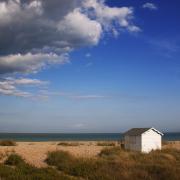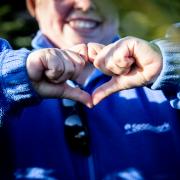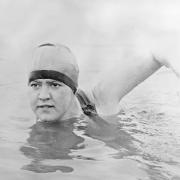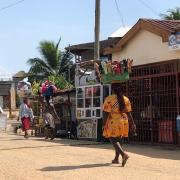An anthropologist, ethnologist, neurologist, psychologist, psychiatrist and author, who lectured at Cambridge and was a Fellow at St John’s, William Halse Rivers Rivers (1864-1922) had more ‘ists’ about him than you could shake the average stick at. Something of the polymath, his uniqueness stemmed from the number of careers he had.

Rivers was born in Chatham, on Constitution Hill, although at least one source posits Luton, Chatham, as his birthplace. He was the son of Henry Rivers (1830-1911) and Elizabeth née Hunt (1834-97), of a middle-class family with a military tradition; two members of the Rivers family had fought at Trafalgar on Nelson’s flagship. Henry’s occupation was rather more sedentary: a student of Cambridge and a Church of England priest who’d enjoy a number of curacies in Kent. The Hunts, meanwhile, had notable speech therapists among their number - including one who treated an attempted assassinator of Queen Victoria. William was the eldest of four, probably named after a military-hero uncle, and had both a given name and a surname of Rivers, which seems bizarre. He’d have a lifelong stammer, which would have made him of interest to those Hunts. Rivers became a day-boy at Tonbridge School from the age of 13, a school that his brother Charles also attended. At the age of 16 he contracted typhoid, an unhappy occurrence that robbed him of his final year of school and any chance of attending Cambridge like his father. Rivers’ attention then switched to medicine, matriculating from the University of London (1882) and also studying at St Bart’s Hospital, graduating in 1886 aged 22, the youngest graduate in the hospital’s history.
Rivers worked as a ship’s surgeon, his first voyages being to Japan and North American in 1887, with regular trips thereafter as a means of combating poor health. Then, on returning to Blighty, he gained an M.D. (London) in 1888 and was elected a Fellow of the Royal College of Physicians in 1889. As a House Physician at Bart’s, Rivers also joined the Neurological Society of London to which he presented ‘A Case of Treadler’s Cramp’ - this referring to a repetitive motion injury common among factory workers, which presaged today’s repetitive strain injury. Wanderlust hadn’t deserted Rivers and he’d spend time in Germany expanding his knowledge and becoming fluent in German before returning to England to specialise in mental illnesses at both Bethlem Royal Hospital and Guy’s. He had also commenced teaching at Cambridge by 1893, becoming university lecturer in psychology in 1897, and then a Fellow of St John’s College in 1902.

Rivers would apply his genealogical methods during the Cambridge Anthropological Torres Strait Islands expedition of 1898, between New Guinea and Australia, when he conducted some of the earliest experiments into cross-cultural psychology. He followed this up by spending several months over 1901-02 among the Todas people of south west India, which spawned his work, ‘The Todas’, achieving new standards for ethnological research and detailed documentation of a people. Another expedition followed to the south west Pacific, to Melanesia, including the Solomon Islands, which resulted in his two-volume ‘History of Melanesian Society’. Here, he set out his theories of diffusion, whereby he argued that cultural traits were exported from one area to another. Although Rivers was a prime mover in the field of social anthropology, really helping to establish the science, his work in this areas has been overlooked. Instead, more column inches have been devoted to his work with shellshock victims, while subsequent academics attempted to sideline his work by laying claim to similar ideas; it can be a brutal world sometimes. Another of Rivers’ lines of enquiry was looking at the physical and psychological effects of the likes of tea, coffee, alcohol and drugs, for example, on fatigue. In 1908 Rivers was made a Fellow of the Royal Society and would be awarded the Society’s Gold Medal in 1915.
William is best known for his humane treatment of WW1 officers who were suffering from shellshock, known today as Post-Traumatic Stress Disorder, the intention being to return them to a combat situation. He joined a military hospital in Lancashire as a physician in July 1915 and was then commissioned as a captain into the Royal Army Medical Corps in 1916, being posted to an officers’ hospital near Edinburgh where he was to pioneer techniques for healing those afflicted by shellshock. He’d also become psychologist at the Royal Flying Corps Central Hospital in Hampstead in 1917 and as the war drew to a close he was also on the staff at the Empire Hospital for Officers, London. Of all his patients, the most famed were Wilfred Owen and Siegfried Sassoon, the Great War poets, Sassoon remaining close friends with Rivers right up until the latter’s death in 1922. In the same year, Rivers became Labour candidate for the University of London constituency, so might have become an MP, however, he was to die before the election. Although he was never an outgoing personality, Rivers did turn his hand to a bit of public speaking after the war; as an exponent myself I respect him for overcoming any demons in doing so.

William Rivers died on June 4 1922 aged 58. An important author, Rivers published books including the seminal one on ‘Kinship’ (1914) and ‘The History of Melanesian Society’ (1915). In his later works, ‘Instinct and the Unconscious' (1920) and ‘Conflict and Dream’ (1923), he is to all intents and purposes a Freudian. He was a shy, introverted kind of character, no doubt not helped by his stammer, and his life has been described as ‘monastic’. He never married. A patient and compassionate man though, the way he pursued his work and passions in the public interest is what I like best about him. The thought of personal gain never really entered his bright bonce. Siegfried Sassoon would later write of him: ‘I would like to meet Rivers in the “next world”. It is difficult to believe that a man such as he could be extinguished’.




























